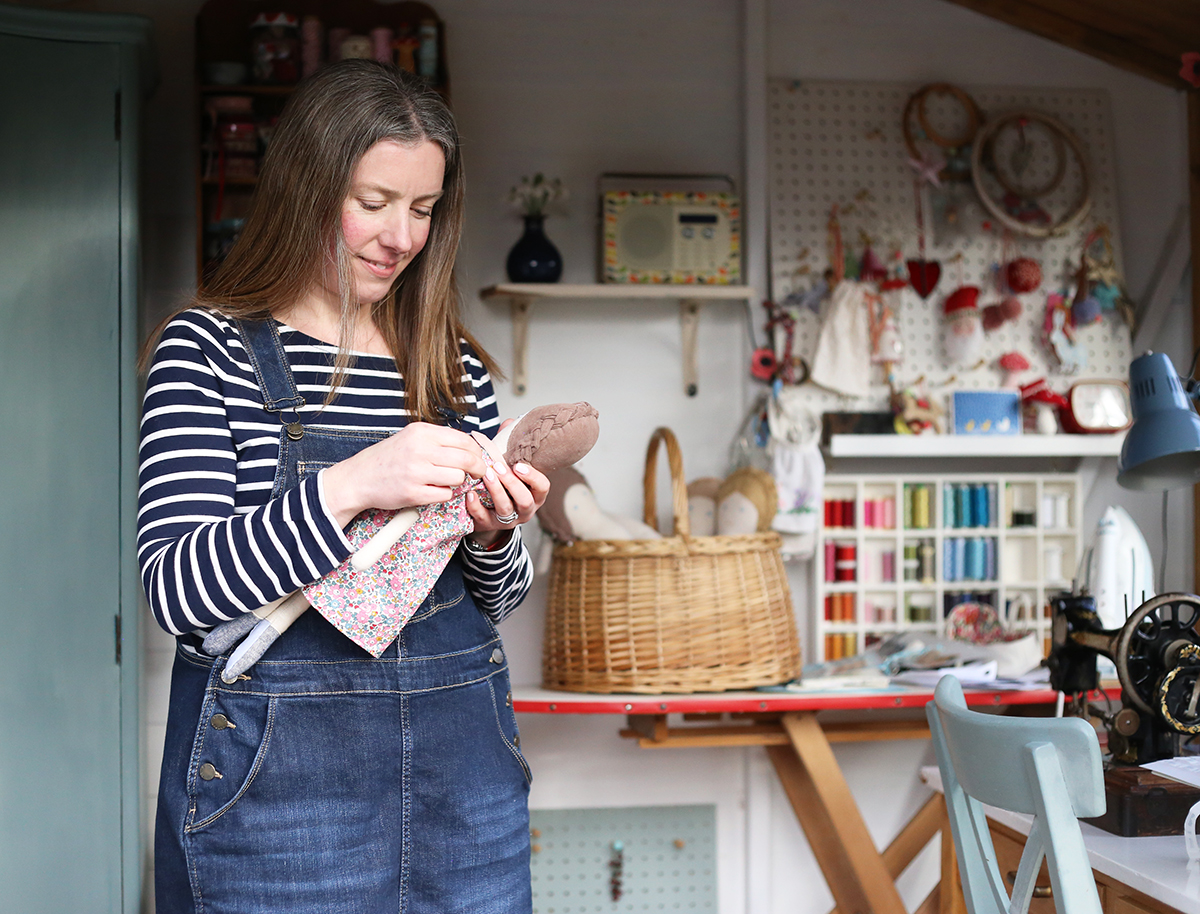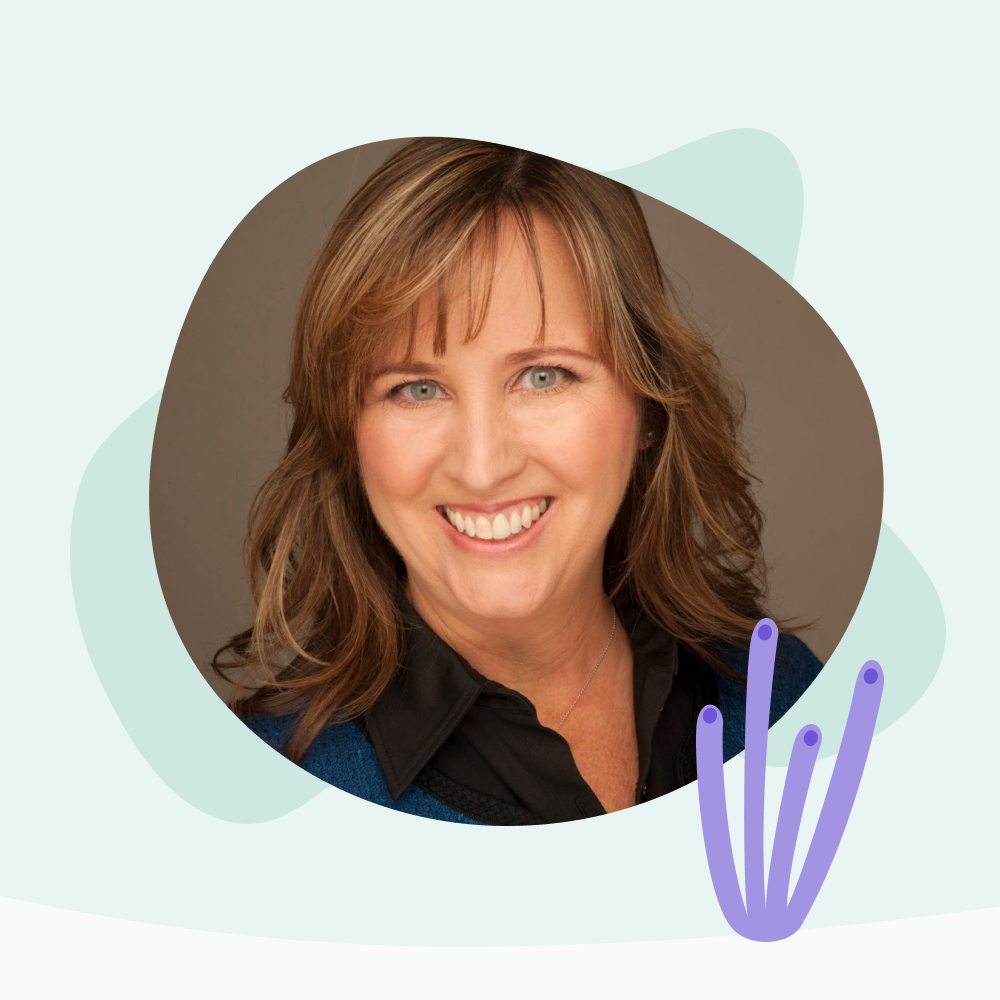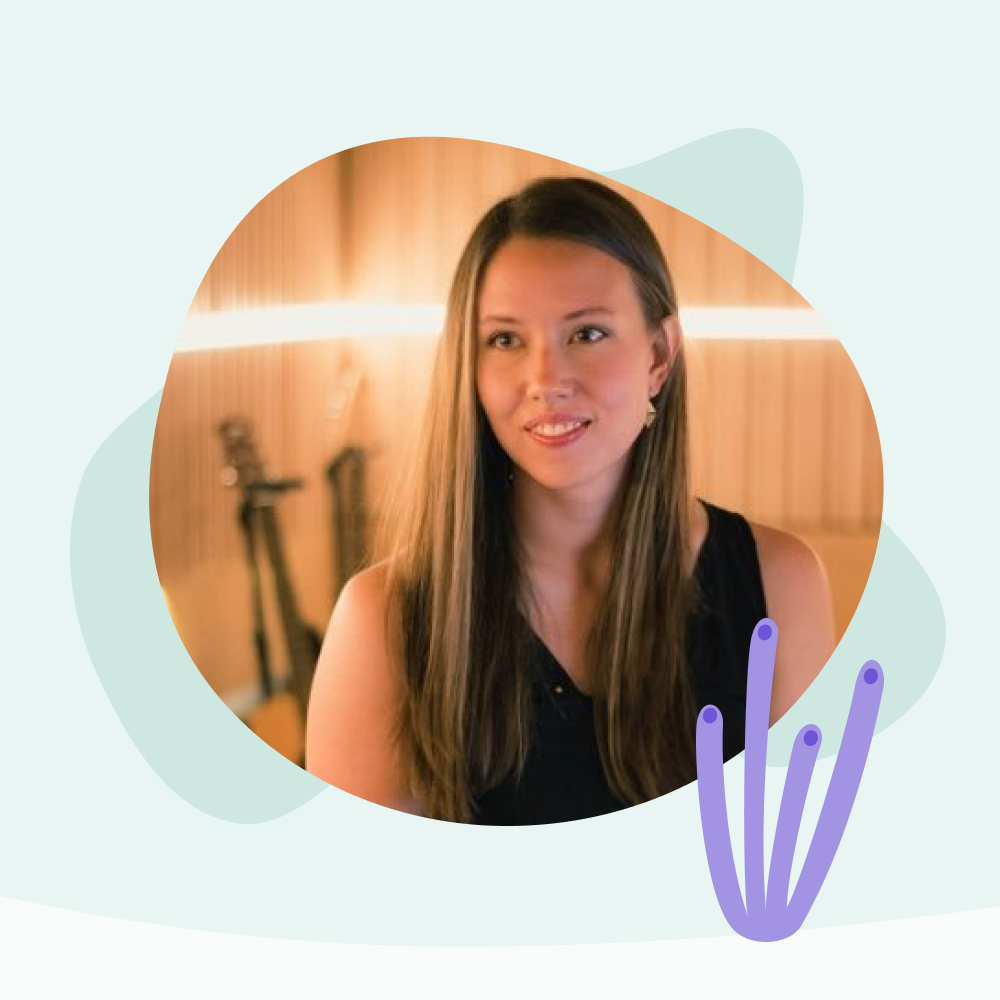Since its inception over 16 years ago, Folksy has become the home of British craft. Artists and designers from all over the British Isles sell their handmade gifts and original artwork to an eager community of craft lovers.
This community shares a genuine appreciation of local talent and the skill that goes into everything from jewellery to clothing, ceramics to stationery. The lovingly crafted items on sale are the stuff of Instagram and Pinterest dreams – head over to their social media channels, and you’ll see what I mean.
And their emails are equally eye-catching. So we’re delighted to have them on board and caught up with Folksy Content Editor, Camilla Westergaard, to find out more.
Tell us a little about yourself and the Folksy brand.
Folksy has been going for over a decade now. We launched in the summer of 2008 and employed our first member of staff the year after. The inspiration for Folksy came from seeing the energy in the craft communities in the early 2000s, around the same time that ecommerce was really taking off. Our founder, James Boardwell, wanted to give artists, designers and makers somewhere to sell online with low fees, low commission and low risk that focused specifically on British craft, while also enabling them to connect with other makers and feel part of a community.
We’ve since grown to become the most popular UK site for handmade gifts. Today, Folksy is the UK’s biggest marketplace for makers – around 8,000 people sell on our platform every year. We have a handmade-only ethos and have built a reputation as a supporter of craft and small creative businesses.
We know you’re a small, close-knit team (no pun intended!) drawn together by your love of crafts. Can you tell us a bit about your team?
Very good! Yes, we are an incredibly small team. At the moment, it’s seven of us with two developers, one content marketer, one product person (also researcher and analyst), and then we have three support staff who work part-time.
I take the lead on our content marketing and social media and manage our vibrant community. Some of us are also artists and designers, which helps us understand the challenges many of our sellers experience.

And what are some of the marketing challenges that you face?
In terms of challenges, I think the biggest one is having a tiny team and a tiny budget. For instance, the dream would be to run a big TV advertising campaign but something like that just isn’t possible because we’re committed to keeping fees as low as possible for our sellers. To have the budget to do something like that, we’d need to increase our commission hugely and that’s against our ethos.
We want to be a platform that enables designers and makers to sell directly to their customers as quickly and easily as possible, while also helping them grow their creative businesses without a big financial investment, and continually supporting the handmade sector in the UK. However, that means we have to think very carefully about how and where we spend money to make sure it’s effective and not wasteful. We do a lot of testing and tweaking and rely on creating unique, high-quality, engaging content.
The key for us is to be creative. Having a huge inventory of unique products and a margin on sale value means traditional ecommerce advertising has to be done very tactically, in a very targeted way. The bulk of our effort is currently going into email marketing and content marketing, particularly video as we look to harness user-generated content to recreate and amplify that.
EmailOctopus helped by allowing us to grow our audience without spending a fortune.
Camilla WestergaardFolksy
Folksy has an impressive reach across social media. How does email fit in with your larger marketing strategy?
Email is crucial to us. As we have two audiences – customers who are looking to buy, and artists, designers and makers who sell with us – we have two different mailing lists and create distinct content for each.
We send out one email every week called (naturally enough) ’The Folksy Weekly’, which is targeted at customers. We try to ensure this always has an interesting story, interview or special offer, as well as products and makers that our customers might not have seen before, so they have a reason to open it. We might include a product or collection in here that has been particularly popular on social media too. Although we do try not to repeat content that our followers may already have seen.
Our ‘Seller Tips’ email is sent out less regularly and we use this email to share news, tips, offers, opportunities and advice that our sellers will find useful. It’s one of the main ways we tell our sellers about important news or site updates. We also see it as a way to help pass on advice that can help grow their businesses. So in that sense this email is less a marketing tool for us and more a professional development tool for them.
We do most of the acquisition through SEO, but social media is almost as significant. Nowadays, social media and email marketing are key for us in terms of engagement. And having a rounded, 360-degree view of comms and channels is becoming more important to us.
EmailOctopus offered all the essential features we needed, was easy to use and great value for money.
Camilla Westergaard Folksy

I imagine you’ve been using email for a while now. Which email marketing platform were you using before EmailOctopus and why did you decide to switch?
Before EmailOctopus we used Mailchimp. We made the switch because, as our mailing lists kept growing, Mailchimp was simply becoming too expensive. At the time we moved over, EmailOctopus didn’t offer as many features as Mailchimp. But we calculated that we weren’t using those features regularly enough to justify the price difference.
When making that decision, what made you choose EmailOctopus?
One of our directors works at the forefront of commerce. He’s always looking out for new startups and companies doing interesting things or disrupting the market. He recommended that we move to EmailOctopus as it offered all the essential features we needed, was easy to use and great value for money. It did everything we needed it to do. And we could even import our existing email templates, so the move wasn’t too painful!
You’ve been with us for two years now. What do you most like about using EmailOctopus?
There are definitely more features now than when we first started using EmailOctopus. And we’ve replaced our old email templates with great new drag and drop ones. These drag and drop templates make it very easy to change layouts, so we can make small changes and try new things without having to start afresh every time. It’s pleasingly straightforward and logical to use.
We love how responsive you are with support queries. We also love how you listen to our needs and the way you’re developing the product offering to include things we need as we grow.
Our mission is to make it easier for brands to grow without spending a fortune. How has EmailOctopus helped your business?
By doing exactly that! It’s helped by allowing us to grow our audience without spending a fortune. This means we don’t have to think about thresholds or price points, and we can concentrate on developing the channel for our audience as we want.
During the time we’ve been with EmailOctopus we cleaned up our mailing lists in line with GDPR. And also removed any subscribers where we weren’t absolutely sure we had explicit permission, so that was a significant cull. However, over a thousand new subscribers every month are still signing up to our mailing lists. And it’s always better to have an engaged audience who are interested in what you’re doing than an enormous mailing list of dead accounts.

What’s on the horizon for Folksy? Any big plans for your email marketing?
Yes! Email marketing is going to figure far more significantly for us next year. We’re building out personalised marketing emails based on user profiles and behaviours, and we hope this will improve the relevancy of the content and, with it, engagement and conversion. We also plan to use segmented lists more to make sure we deliver the right message to the right audience.
We always want to hear what our customers think we should be building next. What features would you like to see from EmailOctopus in the future?
Preference Centre – we have a lot of lists now and especially building out personalised emails we want users to be able to manage what they get from us. We could develop this ourselves and update the lists via an API but a preference centre from EmailOctopus would be preferable.
The ability to send regular automated emails to our customers based on their personal preferences and activity – for example, about new products they might like.
Easier integration with 3rd party data and services and transactional emails.
You’ll be pleased to know we’re working on the Preference Centre and hope to have initial functions go live within the next few months, so it’s definitely on its way!
Exciting news!
And lastly, what advice do you have for other businesses like yours using email marketing?
While email feels like a broadcast channel, it’s best not to think of it that way but to treat it as a means to engage users in what you offer and how this dialogue ‘fits’ with your other channels.
Everyone has busy inboxes these days. So aim for your email to be the one they look forward to and actually want to open. Keep delivering high-quality content they can’t get anywhere else. Or be the essential source of beautifully made or innovative products and interesting stories, so they know that if they click that unsubscribe button they will be missing out.
If that’s the sort of thing you’d love to see in your inbox, sign up to the Folksy newsletter.


People reacted to this story.
Show comments Hide commentsLovely to read the history behind Folksy.